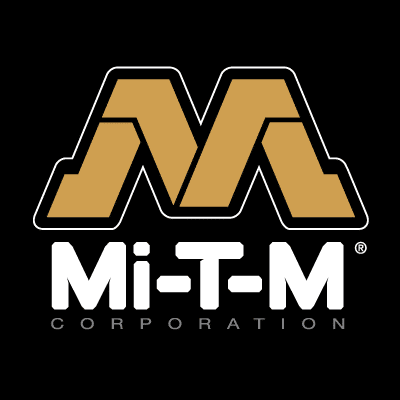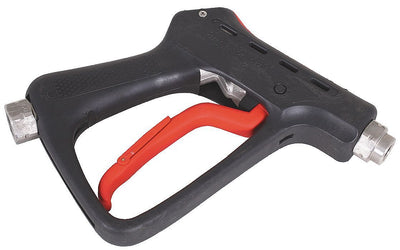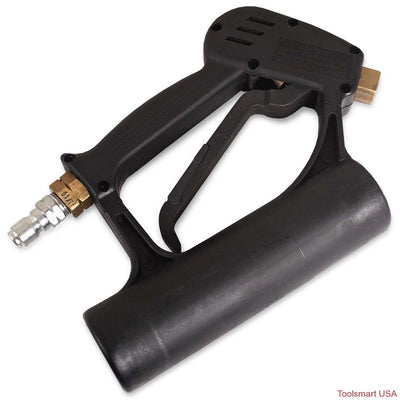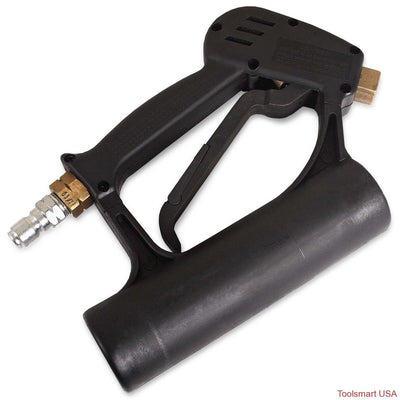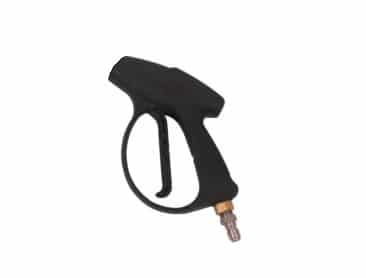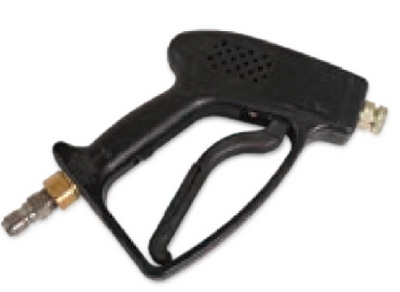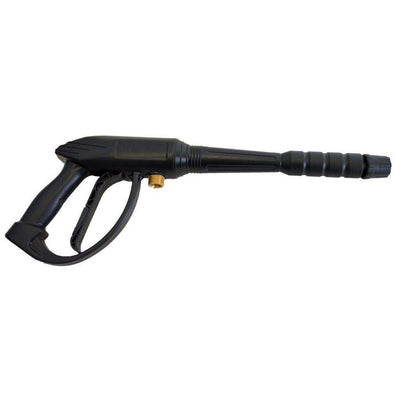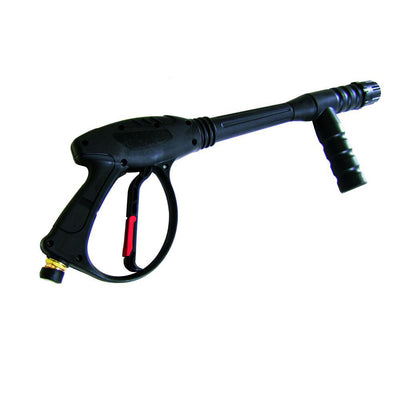Electrostatic Paint Sprayer and Spray Guns Their Pro’s and Cons
What Electrostatic Painting Is
Electrostatic painting is applying a negative charge to a coatin. Your intended target is grounded creating a neutral charge. The negatively charged coating seeks ground and therefore is attracted to the target. This results in a “wrapping” effect where excess coating rather than bouncing off the target adheres to the target resulting in significant over spray reduction. Electrostatic painting utilizes basic application methods includingHVLP, Airless, and Air Assist Airless methods but adds the electric charge to improve transfer efficiency, it is also used with powder coating to cause the powder to adhere to the product with automatic electrostatic spray equipment there are also rotary discs and bells which utilize rotational speed to atomize a coating (unlike the other technologies that use air or fluid pressure).
By far the greatest benefit to electrostatic application equipment is the reduction of coating waste. In ideal settings electrostatic equipment can have upwards of 90% transfer efficiency. This can result in thousands of dollars of cost savings. For a general idea if your coating costs 100 dollars a gallon and you were to use an Electrostatic outfit when you previously were using an HVLP or Air Assist Airless spray gun you would save about $25 – $30 dollars a gallon of paint waste. Or if you were using traditional airless equipment and changed to an electrostatic airless outfit you could save anywhere from $60- $70 dollars a gallon of paint waste. The second great benefit is reduced over spray. If you need over spray to be kept to a minimum electrostatic equipment will reduce overspray anywhere from %25 – %60 percent (the lower percent is if you are currently using HVLP or Air Assist Airless vs the higher percent is for Airless Equipment).
Challenges
Safety
Due to the presence of electricity in your painting process safety is of great concern. The primary safety issue is that the operator and target must remain well grounded. A grounded operator causes all electricity that is created by the spray gun to flow to the coating and not to be stored in the operator. Failure to have the operator properly grounded due to standing on a non conductive surface like wood pallets or on a vehicle with rubber tires can result in a charge building in the operator if the ground outlet on your equipment is to fail or the ground on the air hose were to fail, The operator must also hold the spray gun with a bare hand to prevent an electric charge from building in the operator. If the operator is not well grounded or doesn’t hold the gun with a bare hand, when the operator approaches a grounded target the electric charge will seek the grounded object which can result in an electric spark, which in an area where solvent is present like a paint booth could result in a fire.
If the target and everything within 10 to 15 feet of the booth are not grounded an electric charge may build in the target. This built charge can result in a spark which can create a fire. Additionally, all cleaning should be performed with the electricity, air, and fluid turned off to the spray gun.
Coating Challenges
Coatings have different degrees of resistance and conductivity. Resistance is the tendency to resist being charged and conductivity is the tendency to carry a charge. For electrostatic applications a coating needs to be not to resistant to charge and not excessively conductive. If a coating is excessively conductive (like waterborne coatings) special equipment (like an isolation stand) is required to allow the coating to be charged and prevent it from shorting out but isolation stands should only be used with non flammable coatings. Shorting out refers to an issue where the coating draws excessive current and lowers the voltage below an effective level. Opposed to excessive conductivity causing issues with shorting out if a coating is to resistant to a charge it will not be able to carry a charge and benefit from increased transfer efficiency. Fortunately excessively resistant coatings can be made more conductive by adding proper thinners.
l. Due to these potential problems with electrostatic equipment it is recommended to have the equipment trialed or demoed with your intended coating. By giving the coating a real world trial you can be sure it will spray well electrostatically.
Product Substrate Challenges
Electrostatic application requires the target to be painted to be electrically conductive. This means that substrates like wood, fiberglass, or plastic will not naturally work well with electrostatic application. To spray wood, plastic, or fiberglass electrostatically requires a precoat with a conductive coating that will allow the product to be grounded. In addition to the product substrate challenges you also have an effect called the Far A Day Cage Effect. The Far A Day Cage Effect is due to the fact that a negative charge will seek the nearest ground. When you are painting a corner of a product the coating will adhere to the outer edges but not penetrate into the corner resulting in uneven and even no coverage in a corner of a product. To stop the Far A Day Cage Effect you have to turn the electric off to the spray gun when your painting inside corners.
Summary – When Electrostatic painting is good for your painting Needs
Electrostatic can save a lot of money on coating costs. However, you will want to ensure you will have operators who are attentive to safety considerations. You will also want to evaluate if you will use a coating type that is electrostatic friendly and stick primarily to a waterborne or solvent borne coating so that you do not have excessive equipment costs buying two electrostatic outfits. Finally, you will want to ensure your substrate will be able to be grounded well so that coating costs will truly be reduced.


